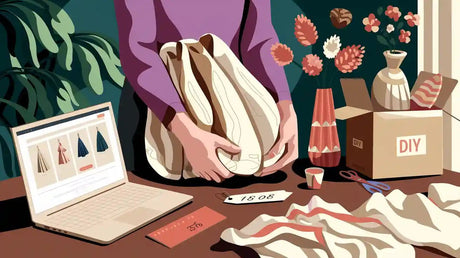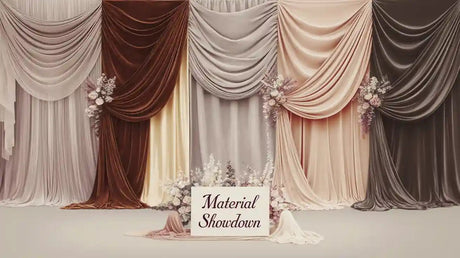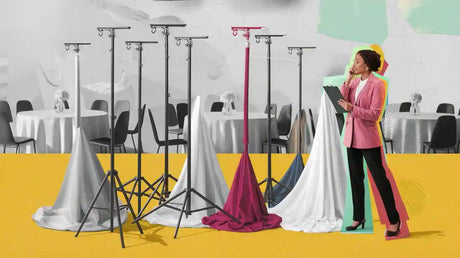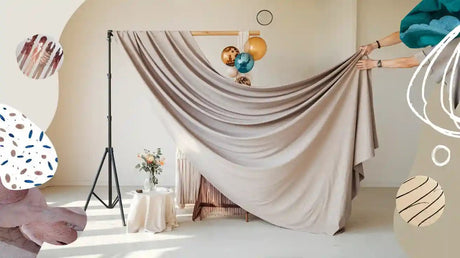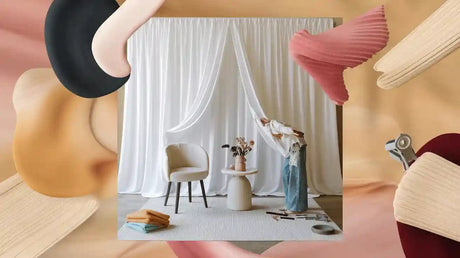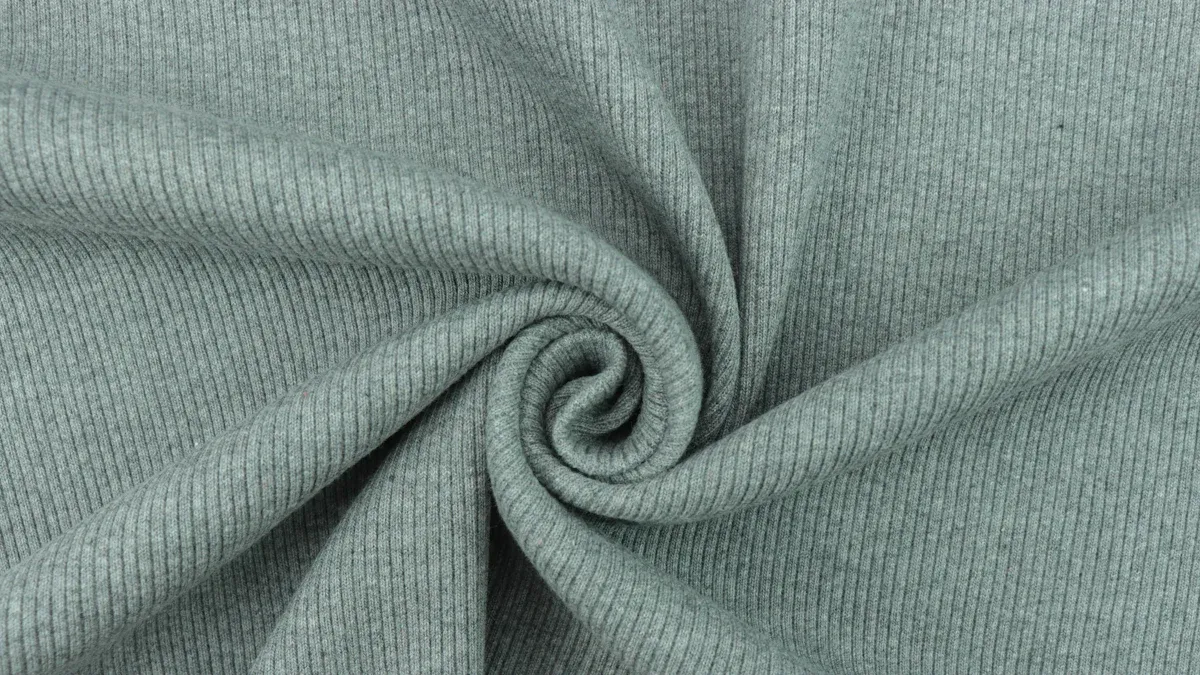
Switching to eco-friendly tablecloths helps the planet in big ways. These tablecloths are made from renewable materials like bamboo. Bamboo needs little processing and creates less pollution. Global waste may reach 3.4 billion tons by 2050. Picking sustainable options cuts waste and saves resources for the future.
Key Takeaways
Eco-friendly tablecloths are made from bamboo and organic cotton. These materials lower waste and cut down on pollution.
Picking tablecloths with organic fabrics helps farms stay healthy. It also keeps the environment safe and clean.
Check for labels like GOTS and OEKO-TEX. These show the tablecloths are made in a safe and eco-friendly way.
Sustainable Materials for Eco-Friendly Tablecloths
Organic Cotton: A Natural and Safe Option
Organic cotton is a great eco-friendly fabric choice. It is grown without harmful chemicals like pesticides or fertilizers. This makes it safer for the planet and people. Organic farming also keeps soil healthy and supports more plant and animal life. It uses methods that help the environment stay strong. Organic cotton also creates less pollution, which is better for the Earth. By picking tablecloths made from organic cotton, you help protect nature and avoid harmful chemicals.
Linen and Hemp: Strong and Green Choices
Linen and hemp are smart eco-friendly fabric options. Linen comes from flax plants, which need little water to grow. They also don’t need chemical fertilizers or pesticides. Linen lasts a long time, so it reduces waste. It also doesn’t release tiny plastic pieces when washed, unlike synthetic fabrics. This helps keep rivers and oceans clean. Hemp is another green fabric with similar benefits. Both are natural, biodegradable, and renewable materials. They are tough and useful, making them great for eco-friendly tablecloths.
Bamboo: A Quick-Growing, Green Material
Bamboo is an amazing eco-friendly fabric because it grows fast. It can grow fully in just four months, unlike trees that take years. Bamboo grows well in poor soil and helps stop soil erosion. It also absorbs more carbon than many other plants, helping the environment. Bamboo is light and flexible, making it useful for many things, like tablecloths. Its ability to grow back quickly makes it a top choice for eco-friendly products.
Eco-Friendly Production Processes
Chemical-Free Manufacturing and Dyeing Techniques
Making fabric without chemicals is better for the planet. Many companies now use new dyeing methods to help the environment. For example, Avitera dyes stick to cotton better, saving 33% of water and energy. ColorZen’s process helps cotton absorb dye faster, saving 90% of water and 75% of energy. These methods avoid harmful chemicals, keeping workers and nature safe. Choosing tablecloths made this way helps protect resources and cut waste.
Certifications for Sustainable Tablecloths
Certifications show which products are truly eco-friendly. GOTS certification means fabrics use organic fibers and eco-safe methods. OEKO-TEX® ORGANIC COTTON ensures items are free from GMOs and harmful chemicals. These labels give clear information and prove the tablecloth supports green goals.
Certification |
What It Means |
|---|---|
GOTS Certification |
Textiles made with organic fibers and eco-friendly processes. |
OEKO-TEX® ORGANIC COTTON |
Products are GMO-free and safe from harmful chemicals. |
Water and Energy Conservation in Production
Eco-friendly methods save water and energy during production. Coal power uses 40% of U.S. freshwater. Switching to renewable energy saves 500 gallons of water per megawatt-hour. Using recycled materials cuts energy use by 90%. These steps save resources and reduce pollution. Choosing eco-friendly products helps lower the harm caused by production.
Ethical and Long-Lasting Benefits of Eco-Friendly Table Linens
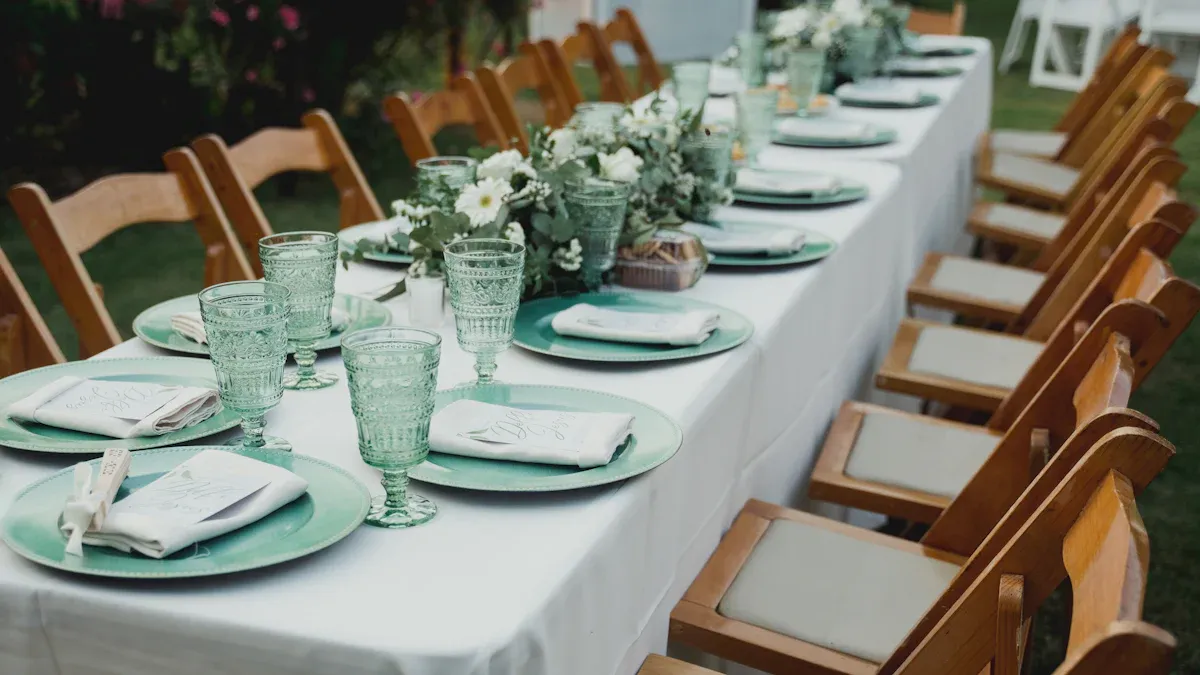
Fair Labor Practices and Local Production
Eco-friendly table linens are made with care for workers. Many companies ensure fair pay and safe workplaces for their employees. Buying locally made linens helps small businesses and cuts pollution from shipping. These linens use natural materials like organic cotton, hemp, and linen. These fabrics grow without harmful chemicals, making them eco-friendly. The production process avoids using strong chemicals, bleaches, or dyes. This keeps workers and the environment safe.
Durability That Reduces Waste
Strong table linens help reduce waste by lasting longer. You won’t need to replace them often. Features like strong seams and good stitching make them last. Following care instructions, like washing gently, keeps them in good shape.
Key Aspect |
Details |
|---|---|
Durability |
Long-lasting linens mean fewer replacements, reducing waste. |
Quality Construction |
Strong seams and stitching make linens more durable. |
Care Instructions |
Proper care helps linens last longer and stay useful. |
Using durable linens helps the planet by cutting down on waste. It also supports a greener way of living.
Timeless Designs for Sustainable Use
Simple designs in eco-friendly tablecloths are better for the planet. These designs don’t follow short-term trends, so they stay stylish. Materials like organic cotton and linen make them last longer. Neutral colors and patterns work for many events, so you don’t need extra tablecloths.
Aspect |
Description |
|---|---|
Longevity |
Simple designs last longer, reducing waste and saving money. |
High-Quality Materials |
Strong materials make linens last and support sustainability. |
Versatile Colors |
Neutral colors match different styles and seasons. |
Various Settings |
Works for many events, helping reduce the need for extras. |
Choosing timeless designs saves money and reduces waste, helping the Earth.
Eco-friendly tablecloths are a smart choice for your home. They are made from renewable materials like bamboo and organic cotton. These fabrics use fewer resources and create less waste. Research shows they have a smaller carbon footprint than regular options. Composting these tablecloths can also cut greenhouse gases. Choosing eco-friendly tablecloths helps the Earth and supports a cleaner future.
Evidence Type |
Description |
|---|---|
Lifecycle Assessments |
Eco-friendly tablecloths use fewer resources and lower carbon footprints. |
Bamboo Tableware Study |
Bamboo items harm the environment less than plastic ones. |
Global Waste Projection |
Waste could reach 3.4 billion tons by 2050, showing the need for eco-friendly choices. |
FAQ
Why are eco-friendly tablecloths better than regular ones?
Eco-friendly tablecloths use safe materials like organic cotton and linen. They are made in ways that protect nature, last longer, and create less waste.
What do certifications like GOTS and OEKO-TEX mean?
Certifications like GOTS and OEKO-TEX prove fabrics follow green rules. They show the products are made safely and without harmful chemicals.
Are eco-friendly fabrics strong and long-lasting?
Yes, fabrics like hemp and linen are very strong and durable. They are well-made to last a long time, cutting waste and helping the planet.

